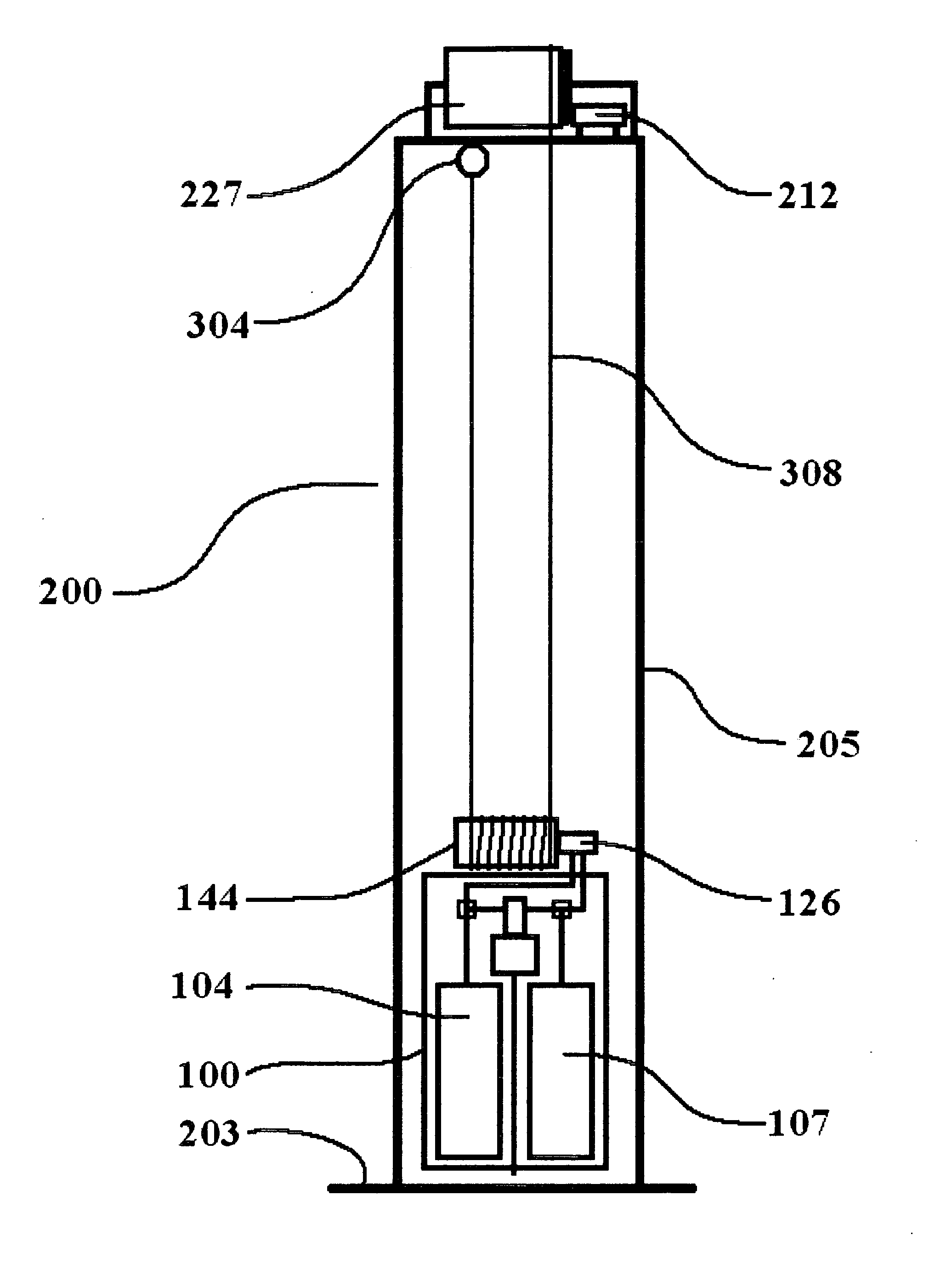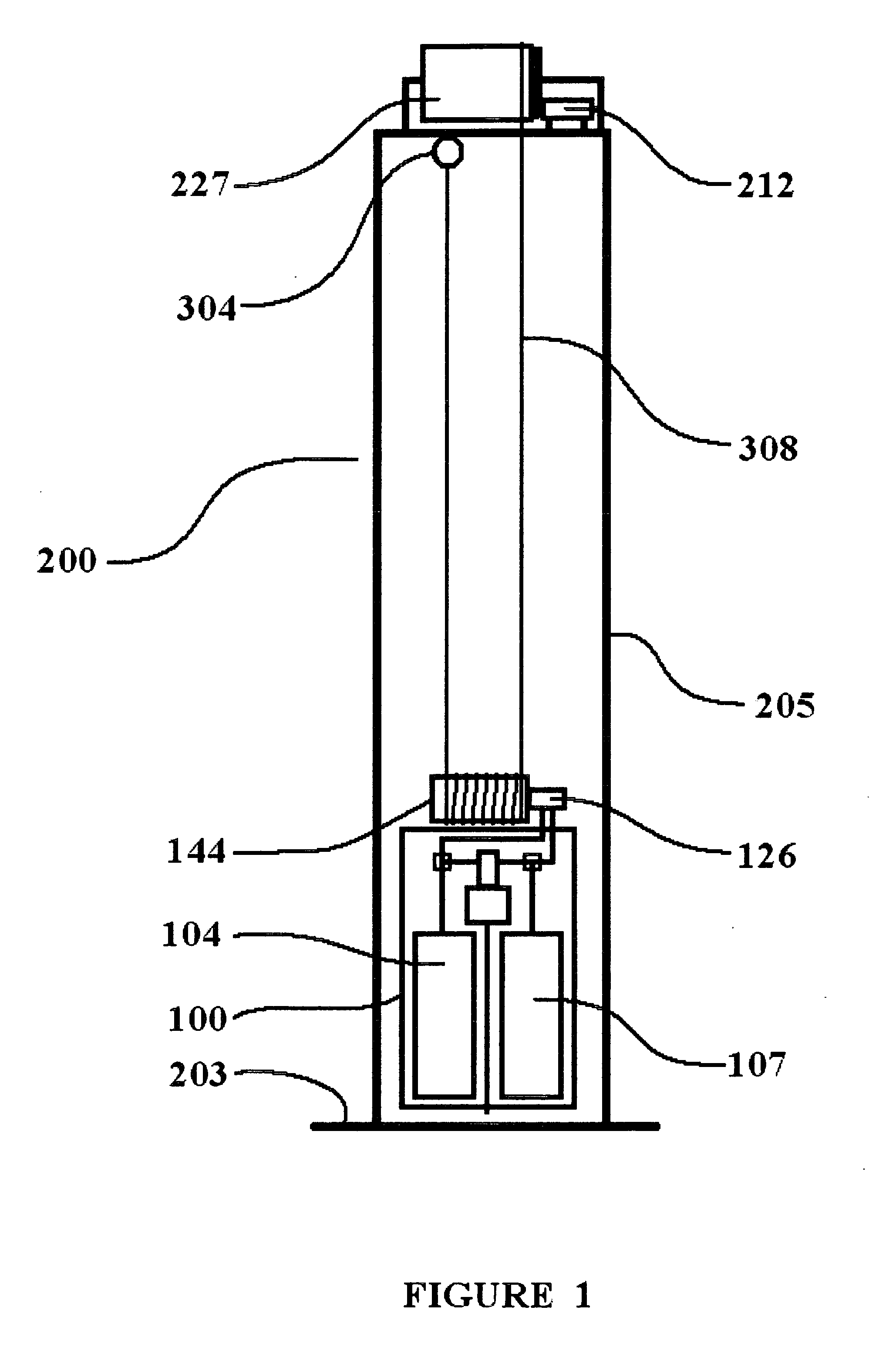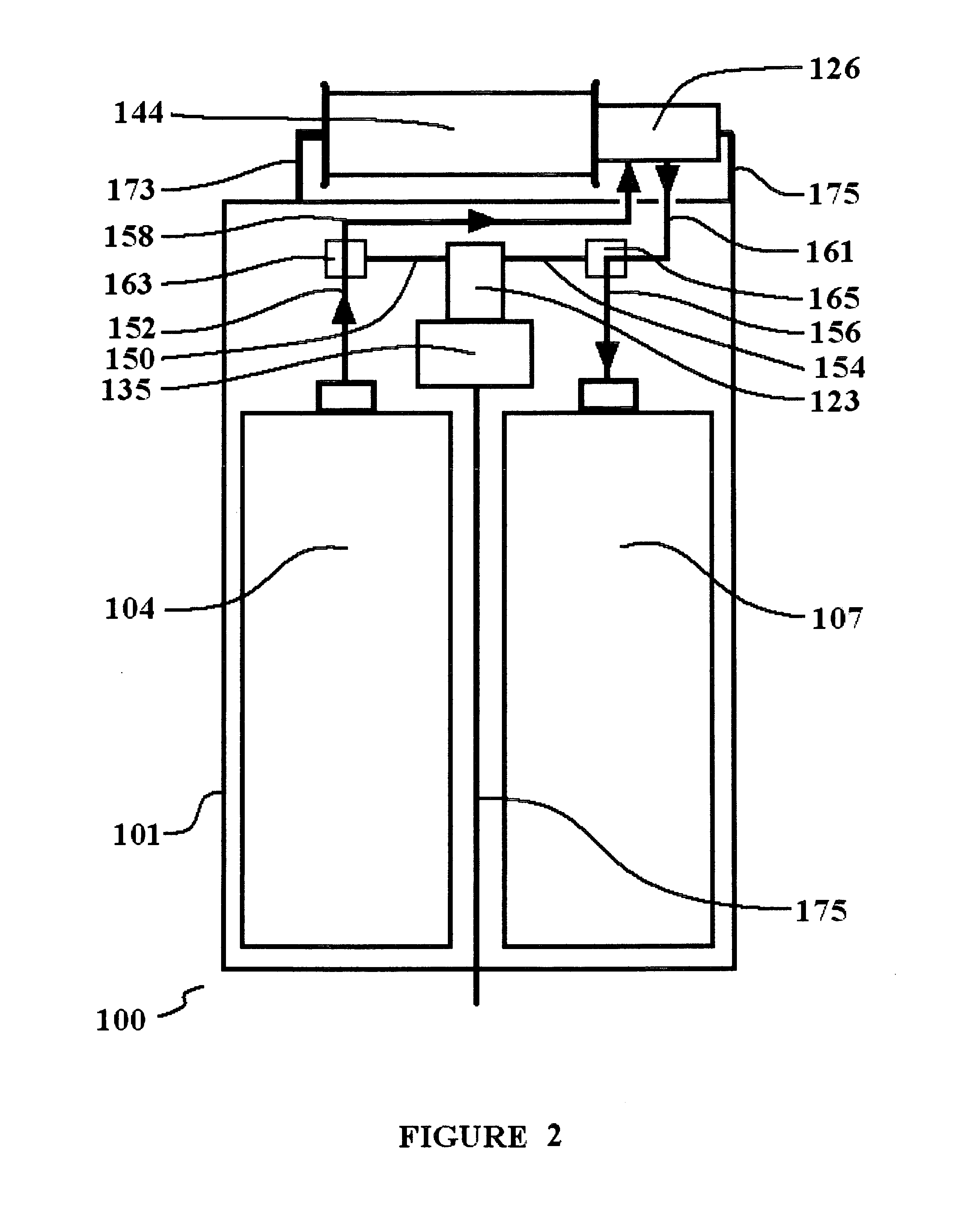Hybrid vertical energy storage system
a vertical energy storage and hybrid technology, applied in the field of energy storage and power systems, can solve the problems of increasing long-term operation and maintenance costs, affecting the life span of batteries and associated electronics, and not being able to use battery only storage technology, so as to eliminate the need for costly transmission and distribution infrastructure improvements and increase long-term operational maintenance costs.
- Summary
- Abstract
- Description
- Claims
- Application Information
AI Technical Summary
Benefits of technology
Problems solved by technology
Method used
Image
Examples
Embodiment Construction
[0066]For the purposes of promoting an understanding of the principles of the invention, reference will now be made to the embodiments illustrated in the drawings, which will be described below. It will nevertheless be understood that no limitation of the scope of the invention is thereby intended. The invention includes any alterations and further modifications in the illustrated devices and described methods and further applications of the principles of the invention which would normally occur to one skilled in the art to which the invention relates.
[0067]Referring now to FIG. 1, the energy storage system generally defined as 100 is composed of several components, and these components are housed in a component mounting structure referred to as 101. Component mounting structure 101 may be a metal box which in this embodiment may be approximately 4 feet tall and 12 inches square. Component mounting structure 101 may be made from and suitable material. Angle iron may compose its skel...
PUM
 Login to View More
Login to View More Abstract
Description
Claims
Application Information
 Login to View More
Login to View More - R&D
- Intellectual Property
- Life Sciences
- Materials
- Tech Scout
- Unparalleled Data Quality
- Higher Quality Content
- 60% Fewer Hallucinations
Browse by: Latest US Patents, China's latest patents, Technical Efficacy Thesaurus, Application Domain, Technology Topic, Popular Technical Reports.
© 2025 PatSnap. All rights reserved.Legal|Privacy policy|Modern Slavery Act Transparency Statement|Sitemap|About US| Contact US: help@patsnap.com



